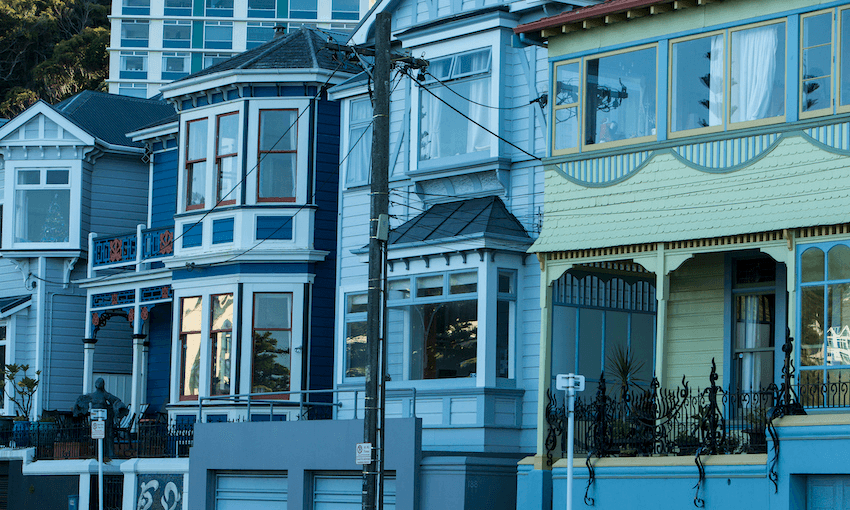Wellington will be home to up to 80,000 more people by 2050, and the question of where they’re going to live is becoming increasingly pressing. Should the look of the central suburbs really take priority over warm, dry, affordable housing?
To say there’s animosity towards Wellington’s housing stock among young people like myself would be understatement. Median weekly rents have exploded in the capital, cracking $600 in January this year. Since December 2014, rental prices have increased a whopping 47% while wages have barely budged. New Zealand is one of the few developed countries to suffer rheumatic fever, a disease linked to sub-standard housing, and each winter 25,000 – 30,000 children are hospitalised with preventable illnesses linked to damp homes.
This is not something that should be happening anywhere, much less in a country that claims to give everyone a fair go.
Wellington City Council (WCC) is currently consulting on Our City Tomorrow, a draft spatial plan which aims to deal with the tens of thousands of people likely to move to Wellington over the next 30 years. The plan would deregulate some housing construction, allowing new, warm, dry, affordable homes to be built.
By allowing higher residential density and reducing planning restrictions, we can fit more people on less land and speed up construction. For example, my apartment building fits 70 people on the size of a lot that would usually support just a single home — and for a cheaper price too. Taking up the proposals outlined in the draft plan would save tax dollars by reducing bureaucracy while creating downward pressure on residential rents and commercial lease costs.
Sounds great, right?
https://twitter.com/BenJaMckie/status/1300955010834997248
But wait – a spectre is haunting Wellington: that of six-storey developments in Mt Victoria, Aro Valley, Mt Cook and Newtown. Who will stand up for these poor suburbs?
Enter Keep Wellington’s Character (KWC), a campaign spearheaded by heritage experts and advocates including Historic Places Wellington. KWC is calling for the council to plan for 46,000 more people by 2050 – the spatial plan’s medium population growth scenario – instead of 80,000, its upper range. It also wants the council to reverse a proposal that resource consent no longer be required to demolish pre-1930s buildings in heritage suburbs.
Not only are many of these pre-1930s homes mouldy, cold and damp, but heritage protection has meant that most of them have been almost impossible to demolish. KWC would keep it that way.
Unfortunately for KWC, what they’re asking for is simply impossible. The recent National Policy Statement on Urban Development has taken the decision on heritage protection out of council hands. The policy statement, a government directive designed to encourage greater density in major urban areas, does have a carve-out for heritage status. But the rules prevent councils from putting blanket heritage protections on whole areas; they can now only be granted on a site-specific basis.
And to be perfectly clear: there is no plan to require old homes to be demolished. If you’re an owner-occupier and you like your old home, you can keep it.
I've lived in several of Wellington's heritage homes along with heritage mould, heritage cold and heritage rodents https://t.co/qf1B1vMQXM
— Lockdown Forsyth (@LachlanForsyth) September 1, 2020
It’s tough for me, as a young person, to see the value in attempting to preserve those neighbourhoods in amber while so many of my peers live in damp, expensive homes, many of which are the same houses that KWC seems intent on forcing us to live in – if we’re lucky enough to find one. We’re never going to have affordable housing if we don’t allow increased density. We’re never going to have healthy housing unless we allow some of these old homes to be demolished.
KWC is aiming to preserve a rose-tinted past at the expense of everyone in Wellington who suffers the cost of higher rents, and at the expense of Wellington’s future growth.
https://twitter.com/jethrocarr/status/1300682056414887938?s=20
That’s not to say nothing needs to be heritage protected. Under the current draft spatial plan we still retain some heritage protection. We could also experiment with economist Eric Crampton’s idea of allowing the council to buy heritage buildings to protect them.
If KWC gets their way, the current trend will persist and rents will continue to rise 6% year on year, Wellington house prices will continue to rise 8% each year and our city will continue to stagnate. More people will be pushed into poverty and people will still suffer housing-related illnesses. We’ll keep seeing articles lamenting how “young professionals don’t want to move to Wellington!” and wonder why nothing changes.
Maybe that’s all worth it for the heritage protection.
As they freeze their asses off in absurdly expensive, cold, century-old homes – all while suffering from some mysterious respiratory condition – I’m sure Wellingtonians will take solace in the fact that at least their suburb’s character was preserved.
Submissions on the Draft Spatial Plan for Wellington are open until October 5.

